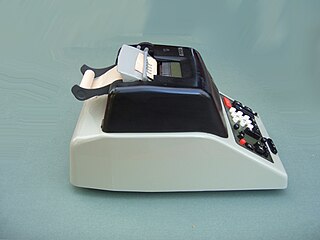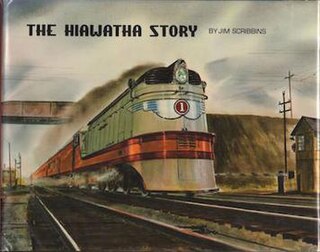
Kawasaki Heavy Industries Ltd. (KHI) is a Japanese public multinational corporation manufacturer of motorcycles, engines, heavy equipment, aerospace and defense equipment, rolling stock and ships, headquartered in Minato, Tokyo, Japan. It is also active in the production of industrial robots, gas turbines, pumps, boilers and other industrial products. The company is named after its founder, Shōzō Kawasaki. KHI is known as one of the three major heavy industrial manufacturers of Japan, alongside Mitsubishi Heavy Industries and IHI. Prior to the Second World War, KHI was part of the Kobe Kawasaki zaibatsu, which included Kawasaki Steel and Kawasaki Kisen. After the conflict, KHI became part of the DKB Group (keiretsu).

Industrial design is a process of design applied to physical products that are to be manufactured by mass production. It is the creative act of determining and defining a product's form and features, which takes place in advance of the manufacture or production of the product. Industrial manufacture consists of pre-determined, standardized and repeated, often automated, acts of replication, while craft-based design is a process or approach in which the form of the product is determined personally by the product's creator largely concurrent with the act of its production.

The Chicago, Milwaukee, St. Paul and Pacific Railroad (CMStP&P), better known as the Milwaukee Road, was a Class I railroad that operated in the Midwest and Northwest of the United States from 1847 until 1986.
In economics and industrial design, planned obsolescence is the concept of policies planning or designing a product with an artificially limited useful life or a purposely frail design, so that it becomes obsolete after a certain pre-determined period of time upon which it decrementally functions or suddenly ceases to function, or might be perceived as unfashionable. The rationale behind this strategy is to generate long-term sales volume by reducing the time between repeat purchases. It is the deliberate shortening of the lifespan of a product to force people to purchase functional replacements.

The Excalibur automobile was a car styled after the 1928 Mercedes-Benz SSK by Brooks Stevens for Studebaker. Stevens subsequently formed a company to manufacture and market the cars, which were a standard Studebaker car with special bodywork.

Clifford Brooks Stevens was an American industrial designer of home furnishings, appliances, automobiles, passenger railroad cars, and motorcycles, as well as a graphic designer and stylist. Stevens founded Brooks Stevens, Inc., headquartered in Allenton, Wisconsin.

The Hiawathas were a fleet of named passenger trains operated by the Chicago, Milwaukee, St. Paul and Pacific Railroad between Chicago and various destinations in the Midwest and Western United States. The most notable of these trains was the original Twin Cities Hiawatha, which served the Twin Cities in Minnesota. The train was named for the epic poem The Song of Hiawatha by Henry Wadsworth Longfellow.

Automotive design is the process of developing the appearance of motor vehicles, including automobiles, motorcycles, trucks, buses, coaches, and vans.

The Olympian and its successor the Olympian Hiawatha were passenger trains operated by the Chicago, Milwaukee, St. Paul and Pacific Railroad between Chicago and the Pacific Northwest. The Olympian operated from 1911 to 1947 and was, along with its running mate the Columbian, the first all-steel train to operate in the Pacific Northwest. The streamlined Olympian Hiawatha operated from 1947 to 1961 and was one of several Milwaukee Road trains to carry the name "Hiawatha". The Olympian Hiawatha was designed by industrial designer Brooks Stevens and included the distinctive glassed-in "Skytop" observation-sleeping cars. It later featured full-length "Super Dome" cars.

Otto August Kuhler was an American designer, one of the best known industrial designers of the American railroads. According to Trains magazine he streamstyled more locomotives and railroad cars than Cret, Dreyfuss and Loewy combined. His extensive concepts for the modernization of the American railroads have repercussions onto the railways worldwide until today. In addition he was a prolific artist of industrial aesthetics and of the American West in general.
David Judd Nutting was an industrial design engineer who played a role in the early video game industry. He also designed the exterior of the Jeep Wagoneer.
Lear Siegler Incorporated (LSI) is a diverse American corporation established in 1962. Its products range from car seats and brakes to weapons control systems for military fighter planes. The company's more than $2 billion-a-year annual sales comes from three major areas: aerospace-technology, automotive parts, and industrial-commercial. The company, however, is basically anonymous, since its products are either unmarked or bear only the label "LSI". Lear Siegler went private in 1987.

The Twin Cities Hiawatha, often just Hiawatha, was a named passenger train operated by the Chicago, Milwaukee, St. Paul and Pacific Railroad, and traveled from Chicago to the Twin Cities. The original train takes its name from the epic poem The Song of Hiawatha by Henry Wadsworth Longfellow. There are a number of Hiawatha-themed names within the city of Minneapolis, the terminus of the original train. The first Hiawatha ran in 1935; in 1939 the Milwaukee Road introduced a second daily trip between Chicago and Minneapolis. The two trains were known as the Morning Hiawatha and Afternoon Hiawatha, or sometimes the AM Twin Cities Hiawatha and PM Twin Cities Hiawatha. The Milwaukee Road discontinued the Afternoon Hiawatha in 1970 while the Morning Hiawatha continued running until the formation of Amtrak in 1971.
Sundberg-Ferar is an industrial design consultancy headquartered in Walled Lake, Michigan. Founded in 1934 by partners Carl Sundberg (1910–1982) and Montgomery Ferar (1910–1982), the company was among the first industrial design firms to be established in the U.S.
Egmont Hegel Arens was an American publisher of literature and art, and an industrial designer and commercial artist specializing in marketing and product packaging.

The Skytop Lounges were a fleet of streamlined passenger cars with parlor-lounge cars built by the Chicago, Milwaukee, St. Paul and Pacific Railroad and sleeper-lounges built by Pullman-Standard in 1948. The cars were designed by famed industrial designer Brooks Stevens. The fleet included both parlor-lounges and sleeping cars. The lounges entered service in 1948 on the Twin Cities Hiawatha, while the sleeping cars were used on the long-distance Olympian Hiawatha. In 1964 the Milwaukee Road sold the sleeping cars to the Canadian National Railway, which operated them until 1977. The parlor cars continued in service with the Milwaukee Road until 1970, when they were retired.

The Super Dome was a Dome car built by Pullman-Standard for the Chicago, Milwaukee, St. Paul and Pacific Railroad in 1952. The ten Super Domes were the first full-length dome cars in revenue service, first operating on the Olympian Hiawatha and Twin Cities Hiawatha in late 1952. Although a mixed blessing in passenger use, the cars garnered much publicity for the Milwaukee Road and several remain in operation.

The Hiawatha Story is a 1970 non-fiction book on railroad history by Jim Scribbins, then an employee of the Chicago, Milwaukee, St. Paul and Pacific Railroad. The book covers the history of the Milwaukee Road's most famous passenger train, the Hiawatha, from its creation in 1934–1935 up through 1970. The book also covered the various other Milwaukee Road trains which carried the name "Hiawatha."
Karl Fritjof Nystrom was an American rail engineer who introduced a number of important innovations, including welded lightweight freight and passenger railcars. He is probably best known for his work designing and building the Hiawatha trains for the Milwaukee Road.

John Plankinton was an American businessman. He is noted for expansive real estate developments in Milwaukee, including the luxurious Plankinton House Hotel designed as an upscale residence for the wealthy. He was involved with railroading and banking. The Plankinton Bank he developed became the leading bank of Milwaukee in his lifetime. He was involved in the development of the Milwaukee City Railroad Company, an electric railway.












